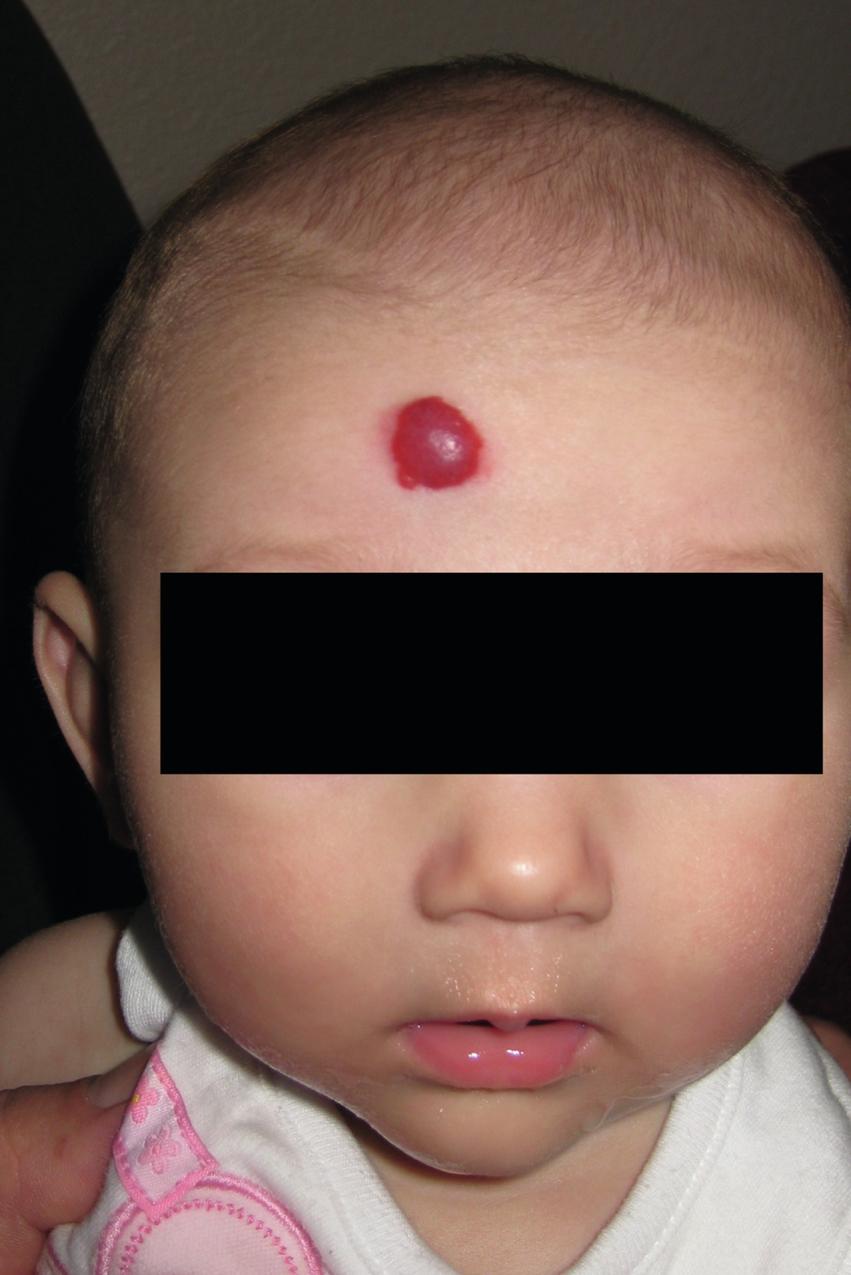Physical Address
304 North Cardinal St.
Dorchester Center, MA 02124
Infantile hemangiomas undergo an initial rapid proliferation for several months before subsequently “leveling off” then eventually involuting, a process that may take years to complete.
Topical timolol gel-forming solution has been a breakthrough therapeutic option for infantile hemangiomas, performing as well as oral propranolol for smaller, thinner lesions with a lower risk of systemic adverse effects.
Clinicians should evaluate patients for PHACE (which stands for Posterior fossa, Hemangioma, Arterial lesions, Cardiac abnormalities, and Eye abnormalities) syndrome if they present with facial hemangiomas greater than 5 cm in size, or segmental facial hemangiomas, or if they have neurological or cardiac symptomatology.
While previously thought to be associated with infantile hemangioma, the consumptive coagulopathy deemed the Kasabach-Merritt phenomenon is seen almost exclusively in kaposiform hemangioendothelioma and tufted angioma.
Neoplasms of lymphatic tissue with or without a venous component or smooth muscle tissue may also occur, though they are rare and more common in females.
Infantile hemangiomas are present at birth or shortly thereafter. Parents may not notice precursor lesions at first, as they may be pale and flat with very subtle telangiectases prior to expanding into the classic vascular plaque that is commonly identified as an infantile hemangioma ( Fig. 41.1 ). Infantile hemangiomas first undergo a stage of rapid proliferation, during which time the vascular lesion can become darker/deeper in color, thicker (vertical growth), and larger (longitudinal growth). This rapid growth typically occurs between 3 and 12 months of age. The rate of proliferation then slows, which is sometimes referred to as the “plateau phase.” Finally, the lesions begin to involute slowly, a process that can take several years to complete. Some cases maintain a protuberant “fibrofatty residual,” while others resolve with only a parchment-like scar.

Infantile hemangiomas should be treated if there is an imminent risk of, or existing, ulceration, skin breakdown, or if facial disfigurement is likely. This risk is increased in larger lesions with particularly rapid vertical or longitudinal growth and/or if lesions are located in areas that may be subject to increased friction or trauma such as the genitals and buttocks or medial thighs. Additionally, if the hemangioma is obstructing a critical area, for example, overlying a patient’s eye, the hemangioma should be aggressively treated, since early lack of sensory input via the eye to the brain can result in permanent vision loss. Facial hemangiomas near the nose and lips are also concerning, as they may lead to permanent disfigurement of these structures even after involution. Lip lesions in particular are likely to ulcerate.
Treatment with beta-blockers is the current gold standard of care in patients for whom treatment instead of observation is recommended. There are both topical and systemic formulations of beta-blockers for infantile hemangioma. Topical timolol—originally formulated for ophthalmologic pathologies—is now an optimal treatment option for small infantile hemangiomas. Because the medication is administered externally via liquid drops directly onto the vascular lesion, it limits the potential for absorption and systemic effects. The patient’s weight in kilograms is equal to the suggested maximum number of drops of topical timolol 0.5% gel-forming solution that the patient can receive in a day. A common regimen is one to two drops applied directly to the lesion twice daily.
Propranolol is an oral option for the treatment of more problematic infantile hemangioma. The usual recommended dose is 2 to 3 mg/kg/day divided twice or three times daily. Patients are usually treated on an outpatient basis with weekly incremental increase of dose starting at 1 mg/kg/day. Medically fragile or premature infants may warrant lower dosing. Inpatient treatment can be more rapidly accelerated and most patients can be increased to 2–2.5 mg/kg/day over a 36–48-hour period. An accelerated inpatient approach can also be used in patients with life or functionally threatening lesions (e.g., possible visual impairment) in whom rapid escalation to a therapeutic dose is helpful. It is important to take a blood pressure and heart rate both before and 1 to 1.5 hours after the initial administration of the drug and at any time there is a dose adjustment made. Such monitoring is prudent to document any side effects such as significant bradycardia or hypotension in response to the given dose. Adjustments can be made as necessary if these side effects occur. A 2018 Cochrane review found no statistical difference between hemangioma size in patients treated with 0.5% timolol gel-forming solution at one drop twice daily compared to propranolol at 1 mg/kg/day. However, another study by Léauté-Labrèze in 2008 showed a dose-response relationship to propranolol, with 3 mg/kg resulting in higher efficacy than 1 mg/kg. Any infantile hemangioma that is life or function threatening should be treated with oral rather than topical therapy.
Become a Clinical Tree membership for Full access and enjoy Unlimited articles
If you are a member. Log in here